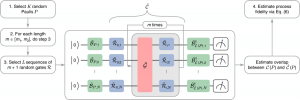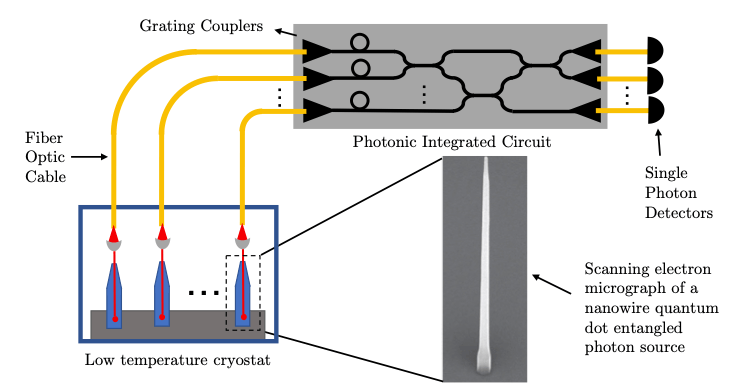Summary
The overall goal of the project is to develop practical methods to be able to reliably run useful applications on near-term quantum computers. This requires identifying and overcoming the ubiquitous errors that currently limit quantum computing capabilities. Traditional methods of quantifying errors in quantum computers fail to predict how errors affect the output of a quantum computation because the exact impact depends upon the exact form of the noise, additional errors arising from interactions between control mechanisms (e.g., crosstalk) and idle qubits, and how the gates are translated and scheduled into temporal pulses. One promising way to account for global errors is to define a parallel quantum instruction (PQI) to be a set of quantum operations executed in a fixed temporal order, including all idle gates for qubits that are not explicitly targeted by any quantum operation. In this project we develop a general method for reconstructing global noise during a cycle of parallel quantum gates and a framework for mitigating and/or extrapolating errors, leading to an experimental demonstration of their effectiveness. This will enable near-term quantum computers to be used to accurately simulate quantum systems and to determine the accuracy of the simulations.

Figure 1. Schematic circuit implementation of the experimental cycle benchmarking protocol for characterizing a noisy parallel quantum instruction G (red). The green gates are used to probe how closely G maps different input states to the desired output state. Random gates (blue) are used to engineer a simple noise model to make the characterization protocol accurate and efficient.
Related Content

Extensible Technology for a Medium-Scale Superconducting Quantum Processor
Summary Superconducting quantum bits, or qubits, use circuits made from superconducting materials to harness quantum mechanical states. These devices contain many atoms, but can behave as simple, controllable qubits. We are building technologies for the control and measurement of superconducting qubits to enable the first demonstration of an extensible, medium-scale quantum processor. Our approach […]
November 28, 2016

Inverse Photoemission Spectroscopy of Quantum Materials
Summary Quantum materials that exhibit strong electron correlations lead to phenomena, such as superconductivity and topologically protected states, that are important for quantum computation, sensing, and other applications. For example, we may utilize symmetry protected topological states to make qubits that are robust against decoherence, while advances in high temperature superconductors may significantly reduce […]
September 20, 2018

Distributing Multimode Entanglement with Microwave Photons
Microwaves have enabled numerous classical technologies, in part because they propagate through air with little energy loss.
March 6, 2017

Photonic Quantum Processor
Photonic quantum processors based on integrated quantum photonic circuits require entangled photon pairs to perform quantum computations. However, current state-of-the-art technologies utilize probabilistic entangled photon sources with limited pair-extraction efficiencies, negatively affecting the computation speed. This project aims to boost the speed of on-chip quantum operations by using bright, on-demand entangled photon sources with an […]
April 24, 2023

